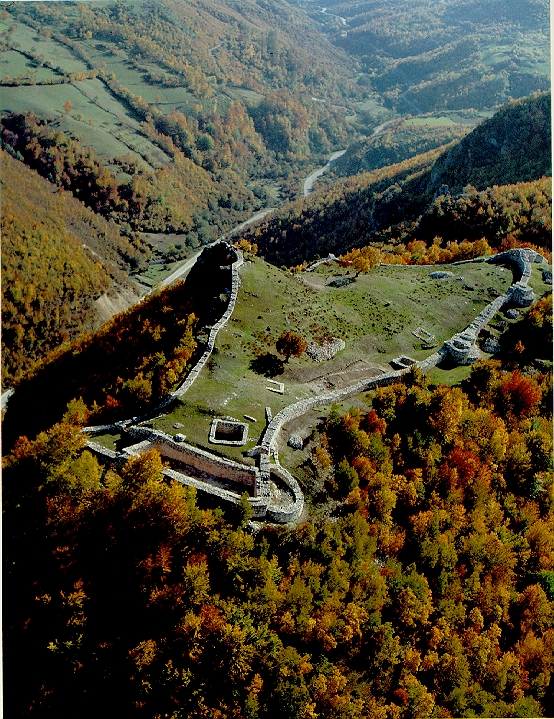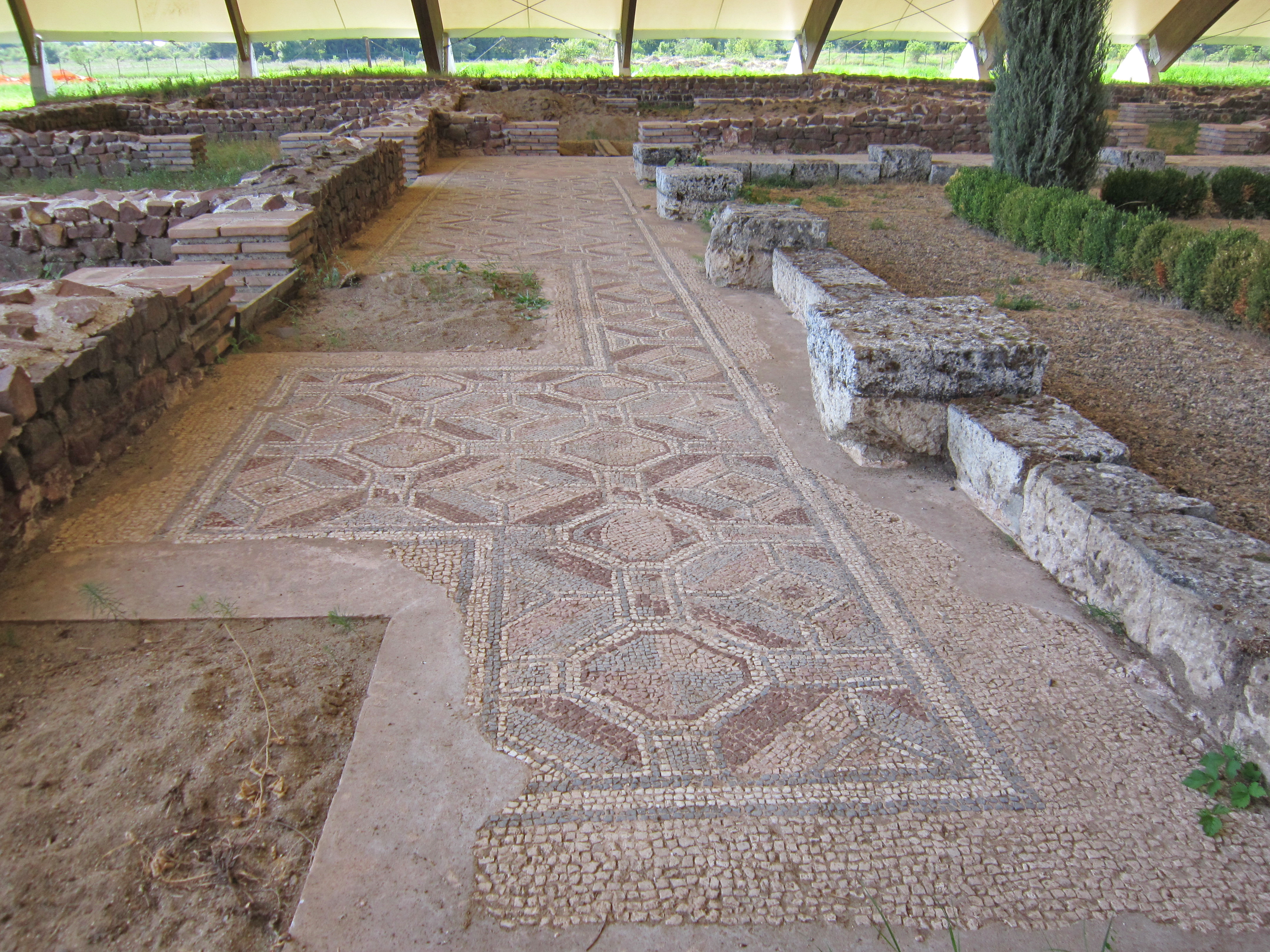|
Logothete
Logothete ( el, λογοθέτης, ''logothétēs'', pl. λογοθέται, ''logothétai''; Med. la, logotheta, pl. ''logothetae''; bg, логотет; it, logoteta; ro, logofăt; sr, логотет, ''logotet'') was an administrative title originating in the eastern Roman Empire. In the middle and late Byzantine Empire, it rose to become a senior administrative title, equivalent to a minister or secretary of state. The title spread to other states influenced by Byzantine culture, such as Bulgaria, Sicily, Serbia, and the Danubian Principalities. Byzantine Empire Origin and development In Greek, ''logothetēs'' means "one who accounts, calculates or ratiocinates", literally "one who sets the word". The exact origin of the title is unclear; it is found in papyri and works of the Church Fathers denoting a variety of junior officials, mostly charged with fiscal duties.. The ancestors of the middle Byzantine logothetes were the fiscal officials known as '' rationales'' during ... [...More Info...] [...Related Items...] OR: [Wikipedia] [Google] [Baidu] |
Byzantine Aristocracy And Bureaucracy
Through the 5th century Hellenistic political systems, philosophies and theocratic Christian-Eastern concepts had gained power in the eastern Greek-speaking Mediterranean due to the intervention of Important religious figures there such as Eusebius of Caesarea and Origen of Alexandria who had been key to the constant Christianized world of late antiquity. By the 6th century they had already influenced the definitive power of the monarch as the representative of God on earth and his kingdom as an imitation of God's holy realm. The Byzantine empire was a monarchic theocracy, adopting, following and applying the Hellenistic political systems and philosophies. The monarch was the incarnation of the law '' nomos empsychos'', and his power was immeasurable and divine in origin. He was the ultimate benefactor, carer and saviour of his people, '' Evergétis'', '' Philanthrōpía'' and '' Sōtēr''. They in turn were his '' paroikoi'' (subjects). He was the sole administrator a ... [...More Info...] [...Related Items...] OR: [Wikipedia] [Google] [Baidu] |
Serbia In The Middle Ages
Serbia in the Middle Ages refers to the medieval period in the history of Serbia. The period begins in the 6th century with the Slavic migrations to Southeastern Europe, and lasts until the Ottoman Serbia, Ottoman conquest of Serbian lands in the second half of the 15th century. The period is also extended to 1537, when Pavle Bakić, the last titular Despot of Serbia in Hungarian exile, fell in the Battle of Gorjani. Introduction Background During the 6th century, at the beginning of the early medieval period, territory of later Serbia was controlled mainly by the Byzantine Empire (southern and central regions), and also by Byzantine neighboring rivals, the Gepid Kingdom and the Ostrogothic Kingdom (northern regions). During the reign of Byzantine emperor Justinian I (527–565), defensive structures in the region were reinforced. In 535, the newly founded city of Justiniana Prima became center of the Archbishopric of Justiniana Prima, with metropolitan jurisdiction over ... [...More Info...] [...Related Items...] OR: [Wikipedia] [Google] [Baidu] |
Comes Sacrarum Largitionum
The ''comes sacrarum largitionum'' ("Count of the Sacred Largesses"; in el, , ''kómes tōn theíon thesaurōn'') was one of the senior fiscal officials of the late Roman Empire and the early Byzantine Empire. Although it is first attested in 342/345, its creation must date to ca. 318, under Emperor Constantine the Great (r. 306–337). The ''comes'' was the successor of the Principate-era ''rationalis'', and supervised those financial sectors that were left outside the purview of the praetorian prefects: the taxation of senators, the ''chrysargyron'' tax, customs duties, mines, mints and state-run mills and textile factories. Initially, the ''comes'' also controlled the emperor's private domains, but these passed under the control of the ''comes rerum privatarum'' by the end of the 4th century. He also exercised some judicial functions related to taxation in his administrative courts in particular in matters of fiscal debt. The office of the ''comes'' gradually declined in imp ... [...More Info...] [...Related Items...] OR: [Wikipedia] [Google] [Baidu] |
Second Bulgarian Empire
The Second Bulgarian Empire (; ) was a medieval Bulgarian state that existed between 1185 and 1396. A successor to the First Bulgarian Empire, it reached the peak of its power under Tsars Kaloyan and Ivan Asen II before gradually being conquered by the Ottomans in the late 14th century. Until 1256, the Second Bulgarian Empire was the dominant power in the Balkans, defeating the Byzantine Empire in several major battles. In 1205, Emperor Kaloyan defeated the newly established Latin Empire in the Battle of Adrianople. His nephew Ivan Asen II defeated the Despotate of Epiros and made Bulgaria a regional power again. During his reign, Bulgaria spread from the Adriatic to the Black Sea and the economy flourished. In the late 13th century, however, the Empire declined under constant invasions by Mongols, Byzantines, Hungarians, and Serbs, as well as internal unrest and revolts. The 14th century saw a temporary recovery and stability, but also the peak of Balkan feudalism as c ... [...More Info...] [...Related Items...] OR: [Wikipedia] [Google] [Baidu] |
Rationalis
A ''rationalis'' was a high-ranking fiscal officer in the Roman Empire. Until replaced by the ''comes sacrarum largitionum'' by Emperor Constantine in the early 4th century, the ''rationalis summarum'' – comparable to a modern-day finance minister – was one of two state officials who had authority over the imperial treasury, the other one being the ''rationalis rei privatae'' (manager of imperial estates and city properties). Examples for tasks that were performed by a ''rationalis'' are "the collection of all normal taxes and duties, the control of currency and the administration of mines and mints". Each province also had various classes of ''rationales'', and Emperor Diocletian's administrative reforms had mirrored the dual structure on the diocesis–level, instituting the local positions ''rationalis summarum'' and ''magister rei privatae'' above the '' procuratores''. The former continued to exist after the reforms, one example are the ''comes et rationalis summarum ... [...More Info...] [...Related Items...] OR: [Wikipedia] [Google] [Baidu] |
Roman Empire
The Roman Empire ( la, Imperium Romanum ; grc-gre, Βασιλεία τῶν Ῥωμαίων, Basileía tôn Rhōmaíōn) was the post- Republican period of ancient Rome. As a polity, it included large territorial holdings around the Mediterranean Sea in Europe, North Africa, and Western Asia, and was ruled by emperors. From the accession of Caesar Augustus as the first Roman emperor to the military anarchy of the 3rd century, it was a Principate with Italia as the metropole of its provinces and the city of Rome as its sole capital. The Empire was later ruled by multiple emperors who shared control over the Western Roman Empire and the Eastern Roman Empire. The city of Rome remained the nominal capital of both parts until AD 476 when the imperial insignia were sent to Constantinople following the capture of the Western capital of Ravenna by the Germanic barbarians. The adoption of Christianity as the state church of the Roman Empire in AD 380 and the fall of th ... [...More Info...] [...Related Items...] OR: [Wikipedia] [Google] [Baidu] |
Heraclian Dynasty
The Byzantine Empire was ruled by emperors of the dynasty of Heraclius between 610 and 711. The Heraclians presided over a period of cataclysmic events that were a watershed in the history of the Empire and the world. Heraclius, the founder of his dynasty, was of Armenian origin. At the beginning of the dynasty, the Empire's culture was still essentially Ancient Roman, dominating the Mediterranean and harbouring a prosperous Late Antique urban civilization. This world was shattered by successive invasions, which resulted in extensive territorial losses, financial collapse and plagues that depopulated the cities, while religious controversies and rebellions further weakened the Empire. By the dynasty's end, the Empire had evolved a different state structure: now known in historiography as medieval Byzantium, a chiefly agrarian, military-dominated society that was engaged in a lengthy struggle with the Muslim Caliphate. However, the Empire during this period was also far more ... [...More Info...] [...Related Items...] OR: [Wikipedia] [Google] [Baidu] |
Diocletian
Diocletian (; la, Gaius Aurelius Valerius Diocletianus, grc, Διοκλητιανός, Diokletianós; c. 242/245 – 311/312), nicknamed ''Iovius'', was Roman emperor from 284 until his abdication in 305. He was born Gaius Valerius Diocles to a family of low status in the Roman province of Dalmatia (Roman province), Dalmatia. Diocles rose through the ranks of the military early in his career, eventually becoming a Roman cavalry, cavalry commander for the army of Emperor Carus. After the deaths of Carus and his son Numerian on a campaign in Persia, Diocles was proclaimed emperor by the troops, taking the name Diocletianus. The title was also claimed by Carus's surviving son, Carinus, but Diocletian defeated him in the Battle of the Margus. Diocletian's reign stabilized the empire and ended the Crisis of the Third Century. He appointed fellow officer Maximian as ''Augustus (title), Augustus'', co-emperor, in 286. Diocletian reigned in the Byzantine Empire, Eastern Empire, and M ... [...More Info...] [...Related Items...] OR: [Wikipedia] [Google] [Baidu] |
Constantine The Great
Constantine I ( , ; la, Flavius Valerius Constantinus, ; ; 27 February 22 May 337), also known as Constantine the Great, was Roman emperor from AD 306 to 337, the first one to convert to Christianity. Born in Naissus, Dacia Mediterranea (now Niš, Serbia), he was the son of Flavius Constantius, a Roman army officer of Illyrian origin who had been one of the four rulers of the Tetrarchy. His mother, Helena, was a Greek Christian of low birth. Later canonized as a saint, she is traditionally attributed with the conversion of her son. Constantine served with distinction under the Roman emperors Diocletian and Galerius. He began his career by campaigning in the eastern provinces (against the Persians) before being recalled in the west (in AD 305) to fight alongside his father in Britain. After his father's death in 306, Constantine became emperor. He was acclaimed by his army at Eboracum ( York, England), and eventually emerged victorious in the civil wars against ... [...More Info...] [...Related Items...] OR: [Wikipedia] [Google] [Baidu] |
Muslim Conquests
The early Muslim conquests or early Islamic conquests ( ar, الْفُتُوحَاتُ الإسْلَامِيَّة, ), also referred to as the Arab conquests, were initiated in the 7th century by Muhammad, the main Islamic prophet. He established a new unified polity in Arabia that expanded rapidly under the Rashidun Caliphate and the Umayyad Caliphate, culminating in Islamic rule being established across three continents. According to Scottish historian James Buchan: "In speed and extent, the first Arab conquests were matched only by those of Alexander the Great, and they were more lasting." At their height, the territory that was conquered stretched from Iberia (at the Pyrenees) in the west to India (at Sind) in the east; Muslim rule spanned Sicily, most of North Africa and the Middle East, and the Caucasus and Central Asia. English historian Edward Gibbon writes in ''The History of the Decline and Fall of the Roman Empire'': Among other drastic changes, the early Mus ... [...More Info...] [...Related Items...] OR: [Wikipedia] [Google] [Baidu] |
Comes Rerum Privatarum
In the Roman Empire during late antiquity, the ''comes rerum privatarum'' ( gr, κόμης τῆς ἰδικῆς παρουσίας, ''kómēs tēs idikēs parousías''), literally "count of the private fortune", was the official charged with administering the estates of the emperor. He did not administer public lands, although the distinction between the emperor's private property and state property was not always clear or consistently applied. The ''comes'' collected rents, handled sales of movable and immovable property, protected the estates from usurpation and accepted lands that came to the emperor by way of grant, bequest, confiscation or forfeiture. Vacant lands (''bona vacantia'') and heirless property (''bona caduca'') both escheated to the emperor. The office was probably created around 318, at the same time as that of the ''comes sacrarum largitionum'', although it is not explicitly mentioned until the period 342–45. The ''comes'' was one of the '' comites consistoria ... [...More Info...] [...Related Items...] OR: [Wikipedia] [Google] [Baidu] |






